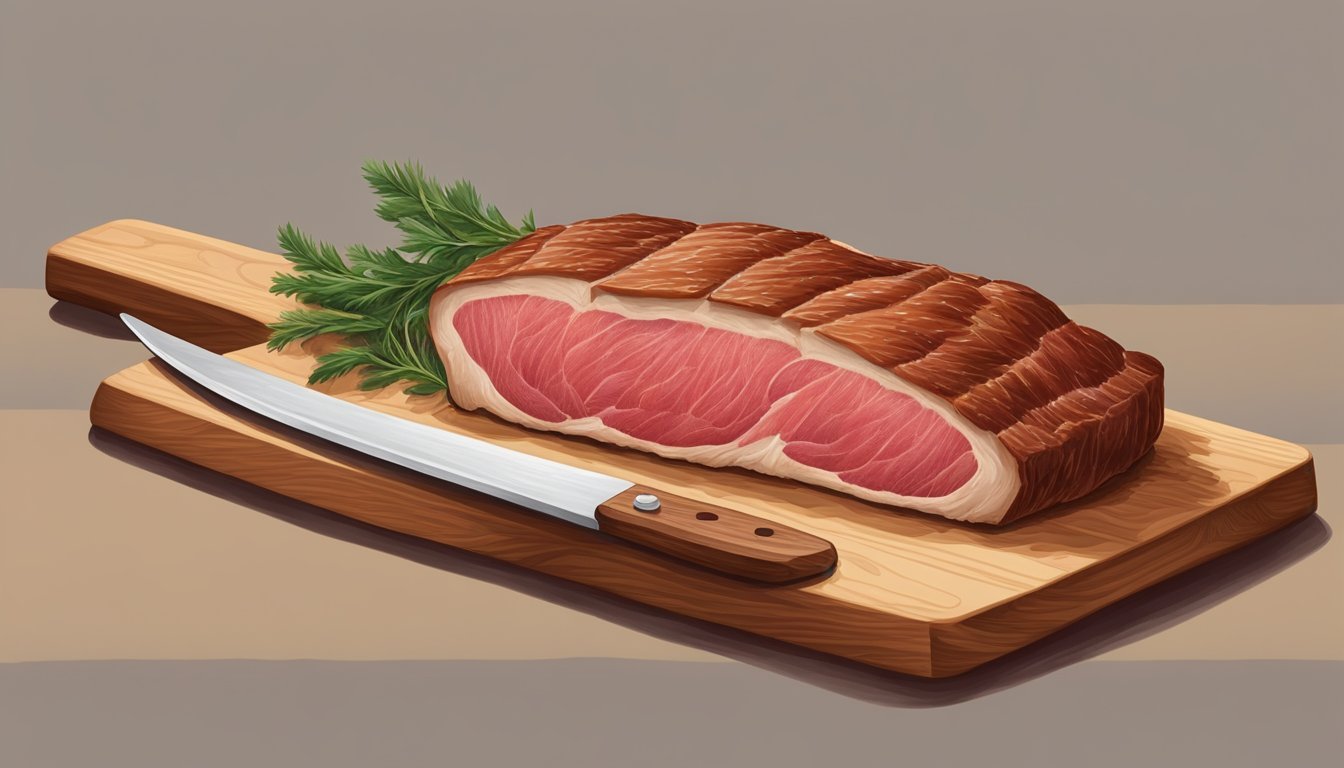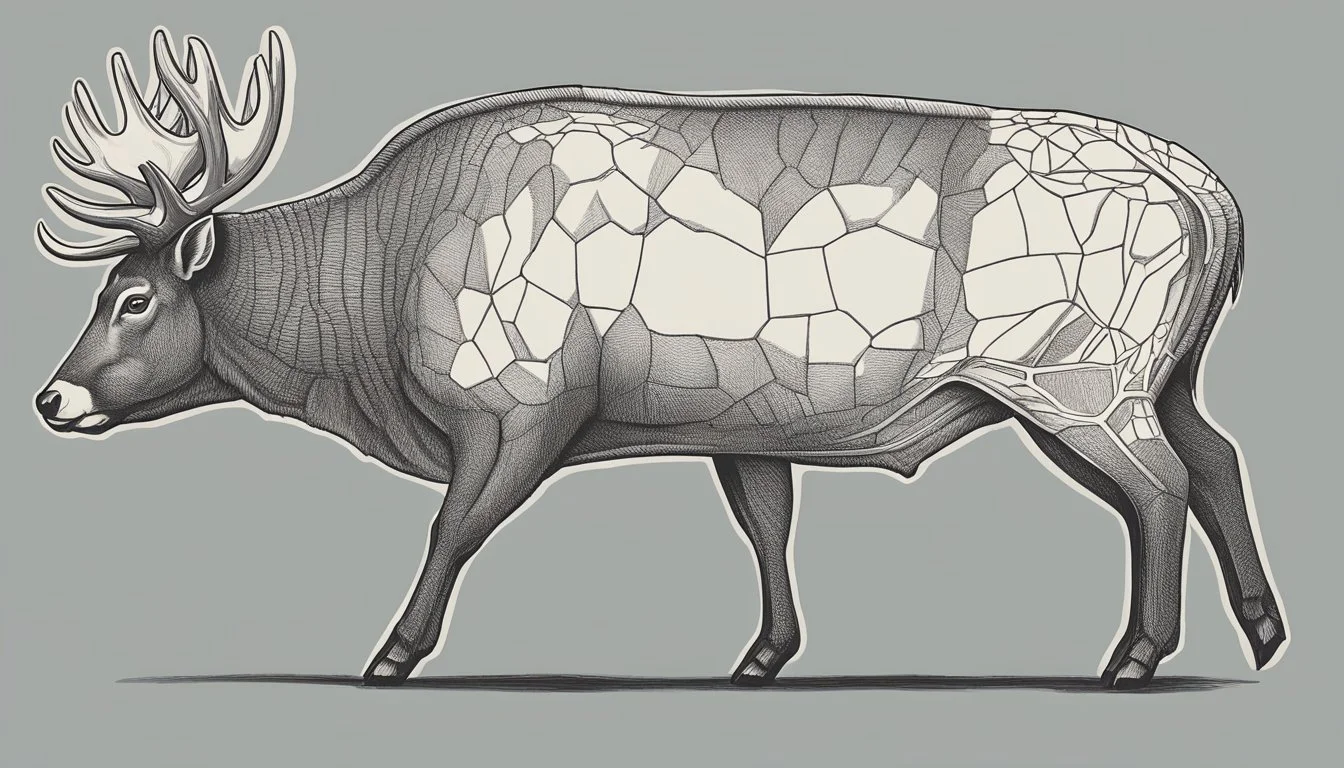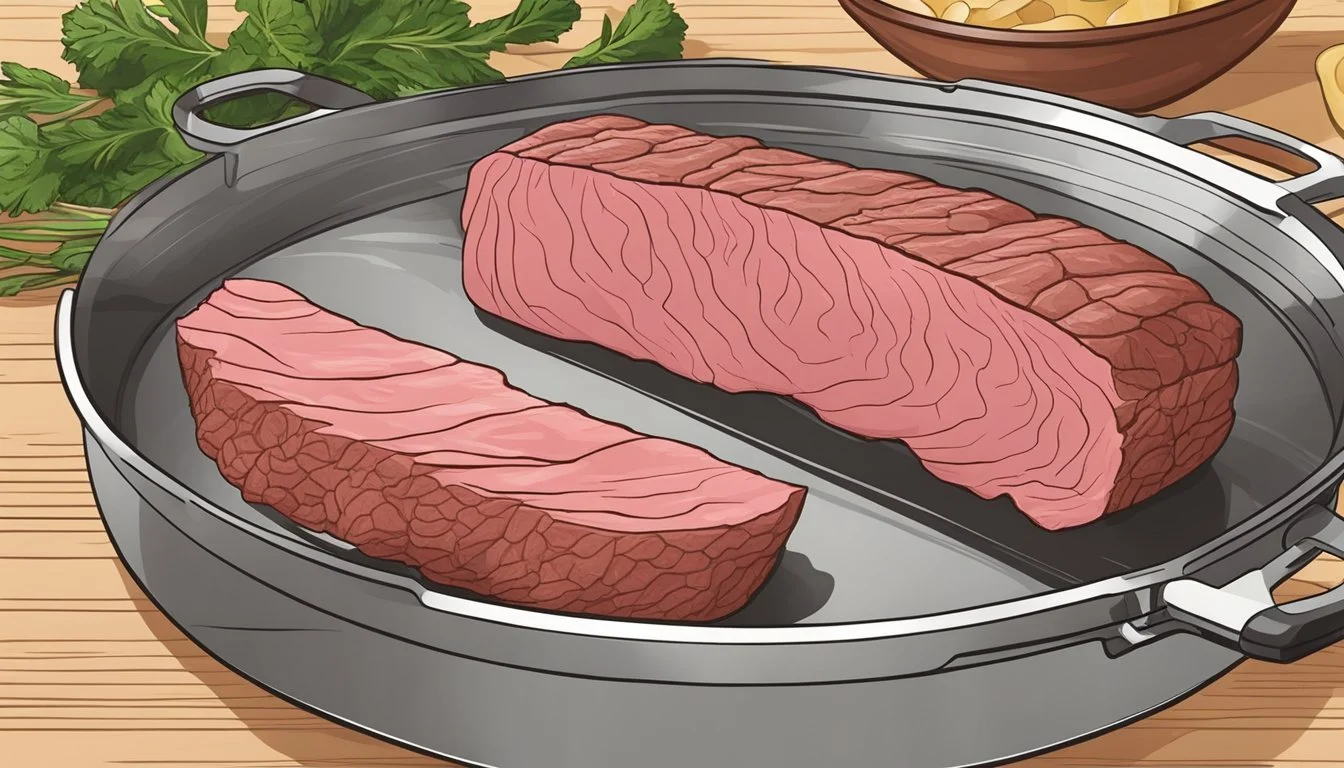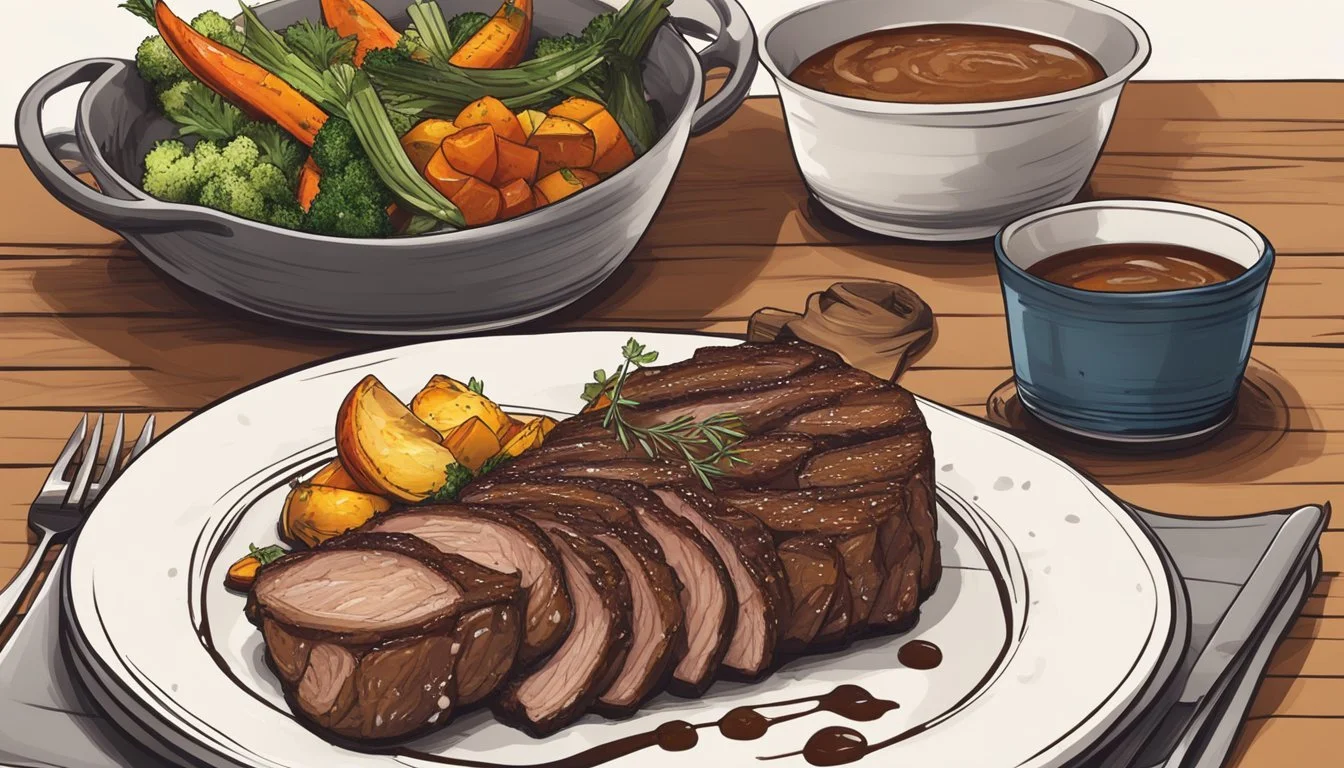Deer Backstrap
Expert Guide on Selection and Cooking Tips
Discover > Texas Outdoorsman > Deer Backstrap
Deer backstrap is a highly prized cut of meat from the tenderloin of a deer, renowned for its tenderness and rich flavor. Often considered the most desirable part of the deer, the backstrap runs along the spine and is considered a delicacy among hunters and chefs alike. This article delves into the various aspects of venison (What wine goes well with venison?) backstrap, covering its preparation, cooking techniques, and serving suggestions.
Various methods can be employed to cook venison backstrap to bring out the best flavors and textures. Marinating the meat prior to cooking is highly recommended, as it helps tenderize the muscular fibers and enhances the natural flavors of the deer. In addition, slow cooking techniques such as hot smoking or braising can work wonders in breaking down the connective tissues, ensuring a melt-in-your-mouth experience.
Pairing venison backstrap with complementary side dishes and accompaniments will elevate the dish to new heights. Various seasonal vegetables and grains are ideal for creating a well-rounded and satisfying meal. From traditional recipes to modern culinary innovations, the versatility of venison backstrap makes it a truly delightful ingredient for cooks and diners alike.
Venison Backstrap: A Prime Cut
Venison backstrap is a highly valued cut of meat from deer. This tender cut, also known as the loin, runs along both sides of the spine and is prized for its tenderness and flavor. As a prime cut, it's one of the most sought-after deer cuts, providing an excellent source of high-quality protein.
The backstrap is typically cut into steaks or left whole to be roasted, making it a versatile option for different dishes. Being lean and tender, it offers a healthy and viable alternative to traditional beef or pork cuts. Venison is known for being lower in fat and cholesterol while still providing essential nutrients like vitamin B and iron.
In addition to its health benefits, venison backstrap has a unique flavor profile. The natural, gamey flavor of deer meat is often preferred by those who enjoy more robust and distinct flavors. To enhance this natural richness, chefs often use herbs, spices, and marinades to complement the meat's natural properties.
When selecting a venison backstrap cut, it's essential to examine the overall quality. Look for a cut with a deep red color and minimal visible fat, as this will ensure the best possible taste and tenderness. It's also important the meat has been handled and stored properly, as this can significantly impact the end quality. Properly wrapping and freezing the meat is crucial for maintaining its freshness.
In conclusion, venison backstrap is a highly regarded prime cut from deer, known for its tenderness, flavor, and health benefits. With careful selection and preparation, it is a versatile and delicious option for those looking to explore the wide array of flavors and culinary possibilities that venison offers.
The Flavor Profile
Venison backstrap, which includes the venison loin and venison tenderloin, is a prized cut of wild game meat known for its rich and unique flavor. This section will discuss the flavor profile of venison backstrap and how it compares to other similar game, such as elk and antelope.
The flavor of venison backstrap is often described as succulent, tender, and mildly gamey. This distinctive gamey taste sets it apart from more conventional meats like beef or pork. The gamey flavor is a result of the deer's natural diet, which typically consists of a wide variety of plants and herbs. This varied diet contributes to the complex flavor profile that many people find appealing in venison and other wild game meats.
Compared to other wild game, venison backstrap has a more subtle gamey taste than elk but is a bit stronger in flavor than antelope. Elk meat is known for having a slightly more robust gamey flavor, while antelope is generally considered to have the mildest gamey taste among the three.
The flavor profile of venison backstrap can also be influenced by factors such as the animal's age, region of foraging, season, and quality of the meat. Older deer may have a more pronounced gamey taste as compared to younger animals, and the flavor may also vary between regions due to differences in available diet.
Wild game recipes usually follow simple cooking techniques, which are often recommended to let the natural flavors of the venison backstrap shine through. Grilling, pan-searing, or roasting cuts with minimal seasonings and herbs is preferable, as it allows the unique taste of the venison to remain the focal point of the dish.
In summary, venison backstrap is a highly sought-after cut of wild game meat due to its distinct flavor profile, which is tender, succulent, and mildly gamey. The taste sets it apart from other meats, and it occupies the middle ground in terms of gamey flavor between elk and antelope. The unique flavor of venison backstrap has garnered a dedicated following among game meat enthusiasts who appreciate its rich taste and versatility in the kitchen.
Preparation and Seasoning
Before cooking venison backstrap, it is essential to properly prepare and season the meat. Start by removing the backstrap from the refrigerator and allowing it to come up to room temperature. This helps ensure even cooking and enhances the flavor of the meat.
In preparation, trim off any excess fat and silver skin from the backstrap. This step helps achieve a more tender and flavorful result. After trimming, pat the meat dry with paper towels to remove excess moisture, as this assists in producing a better sear during cooking.
When it comes to seasoning, delicious venison backstrap recipes often choose simplicity, as this yields the best results. A simple combination of salt and black pepper allows the natural flavor of the venison backstrap to shine through. For a more robust flavor, consider using kosher salt, which has larger granules and a slightly milder taste.
In addition to salt and pepper, there is a wide variety of other seasonings that can be used to enhance the flavor of the backstrap. Garlic salt (how long does garlic salt last?) and stronger fresh herbs, such as rosemary and thyme, complement the natural taste of the meat. For a touch of sweetness and caramelization, consider adding a small amount of sugar or brown sugar to the seasoning mix.
Marinating the backstrap before cooking will provide a more complex and bold flavor profile. Some popular marinades include combinations of lemon juice, soy sauce (how long does soy sauce last?), paprika, and balsamic vinegar (how long does balsamic vinegar last?). Keep in mind that marinating should be done for a limited time to avoid overpowering the natural taste of the venison.
In conclusion, the key to delicious venison backstraps is proper preparation and the right balance of seasonings. By taking the time to prepare the meat and choosing the right combination of flavors, the end result will be a delicious and satisfying meal.
Cooking Methods
Venison backstrap, a tender and flavorful cut, can be cooked in various ways. This section discusses some popular techniques to help you achieve a delicious meal with this prized cut.
One favorite way to cook venison backstrap is on a hot grill or medium high heat. Charcoal grill venison backstrap has a smoky flavor, and grilling helps sear the outside of the steak to lock in its juices. Often a grilled venison backstrap recipe involves preheating a hot charcoal grill after ensuring the grill grates are clean. Season the backstrap according to your preferred recipe, and lightly oil the grill grates with olive or grapeseed oil (how long does grapeseed oil last?). Place the steak on the grill, flipping once to ensure even cooking. The internal temperature should reach 130-135°F for medium-rare meat, 135-140°F for medium, and 140-145°F for medium-well perfectly cooked. Avoid overcooking your grilled venison steak, as this can quickly lead to a dry and tough texture.
Another great method for preparing venison backstraps is searing them in a cast-iron skillet. Cast iron provides even heat distribution and helps to create a beautiful sear on the meat's surface. To cook backstrap in a cast-iron skillet, heat the skillet over medium-high heat and add a high-smoke-point oil, such as olive oil or grapeseed oil. Once the oil is hot, sear the seasoned backstrap on all sides until a crust forms, and then reduce the heat to medium to cook the meat to your desired doneness. Remember to check the internal temperature to ensure your steak is cooked to your preference.
The reverse-sear technique is another excellent option for cooking deer backstrap. This method involves cooking the meat at a low temperature first and then searing it at a high heat to create a flavorful crust. Start by cooking the backstrap in an oven or smoker at a low temperature, around 225°F, until the internal temperature is about 10°F below your desired level of doneness. Remove the smoked backstrap from the oven or smoker, and then quickly sear it in a hot cast-iron skillet or on a grill. This technique helps achieve a tender, evenly cooked, seared venison backstrap.
Some venison backstrap recipes are aimed at those who enjoy a smokey flavor in their meat. This can easily be achieved using a pellet grill or smoker. Choose wood pellets such as hickory, apple, or oak to complement the meat's natural flavors. Configure your smoker or pellet grill to maintain a consistent temperature between 225°F and 250°F, and smoke the backstrap until it reaches the desired internal temperature. The smoking process not only adds a depth of flavor but also starts to tenderize the meat.
In summary, various methods can be used to cook venison backstraps, including grilling, searing in a cast-iron skillet, reverse-searing, and smoking. Each technique brings out different flavors and qualities in the meat, allowing you to create a delicious meal tailored to your preferences.
Dealing with the Gamey Taste
Like other wild game meats, deer meat can sometimes taste gamey . This distinct flavor might not appeal to everyone, but there are ways to reduce or mask the gamey taste, while still enjoy the succulent and tender meat.
Marinating venison backstraps is an effective method of reducing the gamey taste. A well-chosen marinade with the right combination of ingredients can tenderize and enhance the meat's natural flavors. For instance, Worcestershire sauce (how long does worcestershire sauce last?), a popular choice for marinating meat, can do wonders in reducing the gamey taste. This sauce, made from a blend of vinegar, molasses (how long does molasses last?), sugar, and spices, helps break down the meat's muscle fibers, resulting in a tender, flavorful, and less gamey dish.
Here are some simple steps for marinating venison backstraps with Worcestershire sauce:
Prepare the meat: Trim any excess fat or sinew from the venison backstrap and pat it dry with a paper towel.
Mix the marinade: Combine equal parts Worcestershire sauce with a neutral-flavored oil, such as vegetable oil (how long does vegetable oil last?), and add your choice of seasonings (e.g., garlic powder, (how long does garlic powder last?) onions, rosemary, thyme and ground pepper).
Marinate: Place the prepared venison backstrap in a ziplock bag or a shallow dish and pour the marinade over it, ensuring the meat is fully coated. Refrigerate for at least 3 hours or overnight for a more intense taste as the flavors penetrate.
Cook: Remove the venison backstraps from the marinade and cook to your preferred doneness using your preferred method, such as grilling, frying, or roasting.
In addition to Worcestershire sauce, other ingredients like wine, beer, citrus juices, or even yogurt can be used to marinate deer backstrap, effectively minimizing the gamey taste.
Remember that dealing with the gamey taste is often a matter of personal preference, so it is essential to experiment and find your favorite combination of ingredients that enhances your venison backstrap experience.
Additional Considerations
When cooking venison backstrap, there are several factors to consider for achieving the best results. First and foremost, it is important to properly prepare the meat before cooking. In order to achieve maximum tenderness, it is essential to remove the silver skin and any excess fat that may be present on the backstrap. This can be done by using a sharp knife to carefully trim away the unwanted excess.
Another key aspect when you cook deer backstrap is to let the meat rest at room temperature for about 20 to 30 minutes prior to cooking. This allows for even heat distribution and more accurate temperature readings from a meat thermometer. Speaking of temperature, using a reliable meat thermometer probe to monitor the cooking process is a must. It will help ensure that the meat is cooked to the desired level of doneness, whether you prefer it rare, medium, or well done.
Seared venison steaks should be cooked to an internal temperature of 130°F for rare, 140°F for medium, and 160°F for well done. However, it's highly recommended to not cook the backstrap past medium, as being very lean meat, it tends to become dry and lose its tenderness.
During the cooking process, use a paper towel to pat the backstraps dry, which helps to prevent the meat from steaming, thereby giving a much better sear. It's also important to turn the meat frequently on the hot grill, ensuring even cooking and preventing overcooking on one side.
Before you serve venison backstrap once cooked, ensure the meat rests for a few minutes before carving. This step is crucial, as it lets the juices redistribute throughout the meat and the muscle fibers to relax keeping it tender and flavorful.
In summary, the key factors to consider when cooking venison backstrap are proper preparation, allowing the meat to rest before and after cooking, using a meat thermometer, and paying attention to temperature and timing. By following these guidelines, you can be confident that your venison backstrap will be tender, juicy meat, and delicious.
Nutritional Value
Venison backstrap is a lean and healthy source of protein. In a serving size of 100 grams, it provides approximately 158 calories, 30.2 grams of protein, and 3.2 grams of fat. This makes it an excellent choice for those looking to add high-quality protein to their diet without the extra fat often found in other meats.
The protein in deer backstrap contains all essential amino acids, making it a complete protein source. This means it will provide the necessary nutrients for building and repairing muscles and tissues. Additionally, it is very low in fat generally but particularly low in saturated fat, which helps to reduce the risk of cardiovascular disease.
As for minerals, deer backstrap is a good source of potassium. Potassium is essential for maintaining proper fluid balance, regulating blood pressure, and supporting nerve and muscle function. A 100-gram serving of deer backstrap contains around 300-400 milligrams of potassium.
In summary, venison backstraps offer numerous health benefits, including high-quality protein, essential amino acids, and potassium, while being low in calories and fat. This makes them an ideal choice for those seeking a nutritious and lean source of meat, and there are plenty of delicious recipes for using up leftover venison.
Serving Suggestions
Deer backstrap is a tender and delicious cut of meat, often compared to filet mignon or ribeye. To highlight its natural flavors and ensure a satisfying meal, try some of these serving suggestions.
First and foremost, when eating venison consider slicing the backstrap into medallions. This not only makes it easier to cook but also presents beautifully on a plate. Each medallion should be about an inch thick, and they can be grilled or seared for best results.
Pairing your deer backstrap with the right side dishes can elevate the meal even further. Mashed potatoes are a classic choice for accompanying game meats. Their creamy, smooth texture contrasts well with the rich flavor of the backstrap. Alternatively, roasted or grilled potatoes can also complement the meat, adding a touch of crispiness.
Incorporating vegetables can bring color, nutrition, and balance to the dish. Grilled or steamed asparagus makes a simple yet refined accompaniment. For a more unique twist, try serving your deer backstrap with sliced avocado and a little lemon juice. The creamy, mild flavor of the avocado can help to mellow any gamey notes in the meat.
If you're looking to create a more substantial meal, consider including different cuts of venison alongside the backstrap. For instance, you could serve grilled shoulder or tenderloin with the backstrap medallions. This allows diners to experience a variety of textures and flavors from different parts of the animal.
Remember, the key to a delicious deer backstrap dish lies in its preparation and presentation. Use these serving suggestions as a starting point to develop your own unique pairings and combinations, and enjoy the flavors of this versatile cut of meat.






